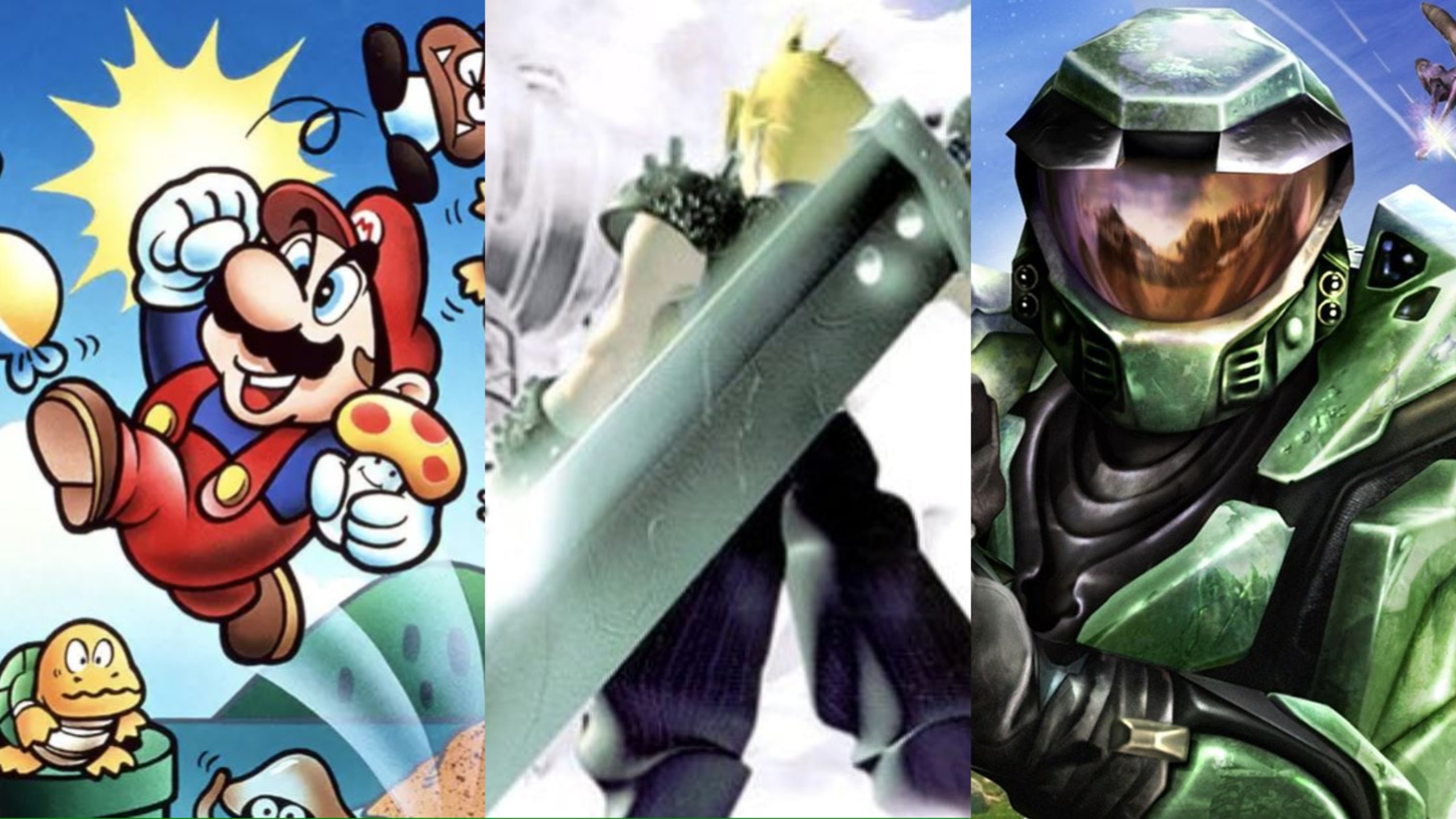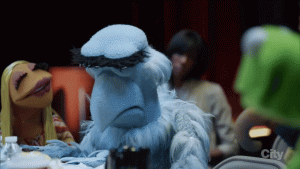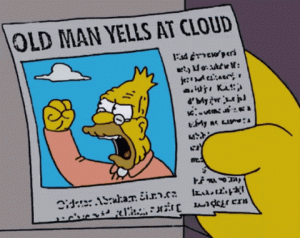
There has been a lot of talk lately about video game system sellers lately. With the industry seemingly gradually moving away from the cutthroat era of true exclusives, the topic of those killer apps that made consoles and handhelds must-have items feels both pressing and a relic of an increasingly different time. In all those discussions, though, one thing remains constant. Nobody can seem to agree on what a true system-selling video game is.
It’s not hard to understand why. The game that made you buy a console may not be the same game that inspired someone else to buy a console. It’s an interesting social phenomenon. On the one hand, video game system sellers are so common that anyone could apply that tag to just about any game ever made. On the other hand, true system sellers (the games that demonstrably led to a notable increase in hardware sales on a wide scale) are surprisingly rare across the course of video game history.
Today, we’re looking at the latter kinds of games. They may not be the reason you bought a particular console, but these games certainly helped move their hardware.
Space Invaders – Atari 2600
Technically, Pac-Man is the best-selling Atari 2600 game ever. However, the Atari version of that game is truly awful and was released around the time of what proved to be the great video game industry crash. Maybe it moved some systems in its day, but it proved to be as much (if not more) of a console killer in the long run.
Instead, the Atari 2600 version of Space Invaders is more worthy of being called a system seller from at least a retrospective standpoint. It was not only a far superior port, but it is responsible for both a massive instant boost in Atari 2600 sales (some figures suggest it quadrupled the console’s sales up until that point) and people everywhere looking at the Atari 2600 as a necessary part of their entertainment centers. Yes, people wanted to play Space Invaders, but it’s the way that this game ignited widespread adoption of the entire home console concept that makes it a truly special example of a system seller.
Super Mario Bros. (NES), Super Mario World (SNES), and Super Mario 64 (N64)
This is a bit of a cheat, but when you consider how rare a true system seller is in the grand history of gaming, you kind of have to create a special bit of room for the system-selling franchise that is Super Mario Bros.
The first Super Mario Bros. was an instrumental part of Nintendo’s grand plan to convince the masses that it was safe to buy home consoles again. Super Mario Bros. wasn’t just better than most other console games released up until that point; it offered a desirable experience that was unique compared to what had come before and even what was available in the arcades. While not originally a pack-in game for the NES, later versions of the console shipped with Super Mario Bros. Many people rightfully remember getting one with the other (my first NES came with the Super Mario Bros/Duck Hunt combo cartridge).
Nintendo decided to go all-in on that strategy by including a copy of Super Mario World with many early international versions of the Super Nintendo (and subsequent versions of the console). While its pack-in status undoubtedly helped it become the best-selling SNES game ever, this isn’t a simple case of the console’s success goosing the pack-in game’s sales numbers. At a time when there were relatively few SNES titles available, you could easily justify buying that new console just to play Super Mario World.
Super Mario 64’s system seller status is a slightly more interesting debate. Given the popularity of the N64’s local multiplayer functionality, you could argue that Mario Kart 64 and GoldenEye 007 were more impactful hardware sellers in the long term. There’s even a case to be made for Ocarina of Time’s cultural impact. But Super Mario 64’s status as the best-selling N64 game ever (without being a pack-in title) is ultimately a testament to people’s willingness to buy new Nintendo hardware simply to play the next Mario game. It also demonstrated the capabilities and functionality of the console’s true 3D platformers, which would eventually become another major selling point for the hardware.
Tetris – Nintendo Game Boy
There are few relationships between a piece of gaming software and a piece of gaming hardware more obvious or impactful than the one between Tetris and the Nintendo Game Boy. Pokémon may be the best-selling Game Boy game ever, but the first games in that series weren’t released globally until almost 10 years after the Game Boy’s debut. Tetris earned its second-best-selling Game Boy game status by virtue of being there all the while.
Record sales aside, it’s the cultural impact of Tetris that makes it an undeniable system seller. The idea of buying a Game Boy to play Tetris was not only reasonable once upon a time but surprisingly common. That partially speaks to the ways it was simply a different time for the industry, but it’s a greater testament to Tetris‘ all-time replayability and the game’s unbelievable ability to reach such a wide mainstream audience so quickly.
Sonic The Hedgehog – Sega Genesis
In some ways, Sonic the Hedgehog may be more responsible for years worth of “Super Mario-like” competitors than Mario himself. After all, Super Mario was such a runaway multi-generational success that you could almost write it off as an anomaly. However, when Sega successfully introduced a direct Mario Bros. competitor and managed to outsell the mighty Mario Bros. with that game…well, the race was on to find the next big platformer mascot.
It’s sometimes easy to forget just how big of a hit Sonic the Hedgehog was. It was the best-selling console game of 1991 and proved to be an especially popular hit on the emerging (and increasingly important) video game rental scene. Even the Sega Master System version of the game kept that console relevant for longer than it probably should have been. Of course, the Genesis was the biggest beneficiary of Sonic’s success. It is, by far, the best-selling Genesis game ever and the game that caused a lot of people to suddenly consider owning a second console or to otherwise make a tough choice in what proved to be a historically significant early console war.
Final Fantasy 7 – Sony PlayStation
The argument over the PS1’s biggest system seller has always been a fascinating debate. Given that the console was released in late 1994 and was considered a success fairly early on, it’s tempting to look at its earlier releases to identify the game that helped put Sony’s hardware over the top. That search will likely lead you to two notable candidates: Tomb Raider and Crash Bandicoot. Both outsold the console’s previous best-selling games by over a million units, and both quickly became synonymous with the hardware itself.
However, it’s ultimately difficult to argue against the conventional wisdom that has long cited 1997’s Final Fantasy 7 as the console’s most notable killer app. Not only did that game achieve the kind of mainstream buzz and sales that had eluded many non-pack-in console games up until that point (especially RPGs), but those in the know who heard the next Final Fantasy would be released for PlayStation rather than N64 were at least waiting to see about buying a PS1 just to play that game. If that’s not enough for you, then consider that 11 of the 15 best-selling PS1 games (not counting Final Fantasy 7 itself) were released after Final Fantasy 7.
Yet, Final Fantasy 7 is not the best-selling PS1 game. That honor belongs to a franchise that has often been denied its system-selling credentials…
Gran Turismo 3: A-Spec – PlayStation 2
Unlike the PS1, identifying the PlayStation 2’s biggest system seller is remarkably easy. It was the console’s built-in DVD player. When we’re talking about system-selling games, though, most people gravitate towards one of the PS2’s major 2001 releases that include all-time great games like Final Fantasy X, Metal Gear Solid 2, and Grand Theft Auto 3. With due respect to all of those games, I have to give this honor to Gran Turismo 3: A-Spec.
It’s easy to forget (if you ever knew it in the first place), but the original Gran Turismo was the best-selling PlayStation 1 game and Gran Turismo 2 was that console’s third best-selling game ever. At a time when racing games were true system sellers, Gran Turismo was the market king of all racing game franchises. It’s no surprise that Sony leaned so heavily into Gran Turismo 3 when promoting the PS2 early on. It was not only the next installment in one of their biggest series, but it showcased the power of their new console like few other games ever would.
Ultimately, Gran Turismo 3 would not only outsell those other major 2001 PS2 games by at least 6 million units but went on to become the best-selling console’s second-best-selling game ever behind only GTA: San Andreas. Of course, that game was released well into the system’s historically dominant run.
Halo: Combat Evolved – Microsoft Xbox
You have to wonder where the Xbox brand would be without Halo. Released against some considerable console competition manufactured by the industry’s heaviest legacy hitters at that time (Sega, Nintendo, and Sony), Microsoft desperately needed a game that would put the Xbox on the radar before they became buried under the weight of what proved to be a historically great year for gaming. They found that game in Halo: Combat Evolved.
It’s not just that Halo offered the greatest console FPS experience since GoldenEye 007 (and, if we’re being honest, was the far superior game at that time). Not, it’s that Halo featured a robust multiplayer mode that encouraged the purchase of three other controllers and, ideally, the purchase of three other consoles to utilize the game’s incredible 16-player LAN functionality. There are other multiplayer games released before Halo that helped sell consoles (especially on the N64), but no other multiplayer game had elevated a console through social pressure, hardware requirements, and sheer quality quite like Halo did. Of course, Halo 2‘s Xbox Live functionality pushed that trend into a direction that proved to be the future of gaming.
Grand Theft Auto: Liberty City Stories – PlayStation Portable
It feels necessary to highlight the PSP’s biggest system seller for two major reasons.
First off, the PSP is really the only handheld device that has ever given a Nintendo handheld console genuine sales competition. That’s partially due to the power of the PlayStation name at that time (and the quality of the device itself), but it’s a historic level of success that also forces you to look at the hardware’s library for answers. That closer look will likely lead you to the PSP’s best-selling game: Grand Theft Auto: Liberty City Stories.
And that’s the other major reason why it’s worth bringing the PSP into this discussion. Since the release of Grand Theft Auto III on the PS2 in 2001, Grand Theft Auto games have undeniably helped drive console sales. Yet, as the major installments in the GTA series became day-one multiplatform releases in the next generation, it became difficult to call those game system-selling exclusives in the traditional sense (and the PS2 was already an established success by the time GTA: San Andreas was released). However, the fact that Liberty City Stories’ offered an exclusive new 3D GTA adventure on a handheld console proved to be a powerful pull for Sony’s recently launched device. You have to wonder if the Vita would have done better if it too had received exclusive GTA games.
Wii Sports – Nintendo Wii
You could make the argument that Wii Sports is the most notable example of a system seller in the history of video games. In fact, if we’re just talking about the pure numbers, it might not even be much of an argument.
Yes, Wii Sports was a pack-in title for the Nintendo Wii, which obviously contributed to its jaw-dropping sales numbers (over 82 million copies). Ultimately, over 80% of Wii owners also owned a copy of Wii Sports, which is a staggering figure to wrap your head around. No other exclusive (even if it was a pack-in game) has come close to replicating that kind of adoption rate.
It’s impressive, but it makes sense. Wii Sports was an ideal demonstration of motion-controlled technology at a time when many rightfully had questions about the long-term appeal of that novelty. Quite frankly, it’s still one of the only motion-controlled games worth playing solely due to the appeal of that control method rather than in spite of it. Wii Sports was either the reason you bought a Nintendo Wii or it was the game that sold you on the merits of the console you just bought.
Pokémon X/Y – Nintendo 3DS
The 3DS was hardly ever a flop, but the console certainly got off to a rocky start. Mass audiences (and quite a few core fans) weren’t immediately sold on the idea that the handheld’s 3D technology made it a worthy successor to the Nintendo DS. To be fair, the device’s early offerings failed to sell the potential of that technology. It took several hardware tweaks and re-releases before the 3DS found its market footing. Had Nintendo not gone back to the drawing board, it’s difficult to say how the 3DS ultimately would have fared.
However, don’t overlook the role Pokémon X/Y had in the handheld’s resurgence. While it’s only the second-best-selling 3DS game ever (behind Mario Kart 7) it’s the fastest-selling 3DS game ever and a game that’s release coincided with a notable surge in 3DS sales. To put it another way, the 3DS essentially had a second launch sometime in late 2012/early 2013, and Pokemon X/Y was the game that convinced a lot of people that the New 3DS was finally worth caring about.
PlayerUnknown’s Battlegrounds – Xbox One
The Xbox One is sometimes treated as a bit of a joke and is certainly the biggest hardware blunder in the history of that console brand. However, it’s easy to forget that the Xbox One still sold just under 60 million units and is a top 15 best-selling console ever. Was some of that based on the legacy success of the brand? Perhaps, but it’s telling that the console’s best-selling game wasn’t Halo, Gears of War, or any other legacy franchise. It’s actually PUBG.
There was realistically no way Microsoft could have known how popular PUBG would be when they got the rights for the game to debut on Xbox One as part of that console’s Game Preview program. Eventually, though, PUBG would sell 9 million units on Xbox One (almost twice as many copies as the second-best-selling game) en route to becoming one of the best-selling games ever across all platforms. Pure sales aside, PUBG brought people back into what the company might call the “Xbox ecosystem” at a time when they desperately needed to shift the narrative.
The Legend of Zelda: Breath of the Wild – Nintendo Switch
The Nintendo Switch is well on its way to being one of the most successful video game consoles ever. While the Switch’s hybrid design is obviously a big part of its appeal, only a revisionist history of the console would dare suggest that much of its early success shouldn’t be partially attributed to Breath of the Wild.
In fact, in March 2017, Nintendo reported that they had sold more copies of Breath of the Wild than they had sold Nintendo Switch consoles. Mind you, that figure doesn’t include the Wii U version of Breath of the Wild. How do you explain that phenomenon? Well, it’s partially because customers wanted to have a copy of Breath of the Wild ready to go while they still tried to secure a Switch. Others simply found it easier to own multiple copies rather than toy with the game’s strange multi-file save system. Yet, there’s also something to be said for the fact that the aforementioned Wii U version of the game was such a commercial non-entity that the Switch version of the game was sometimes perceived to be the only “real” version of what proved to be a generational experience.
The post The Biggest System-Selling Video Games Ever appeared first on Den of Geek.









